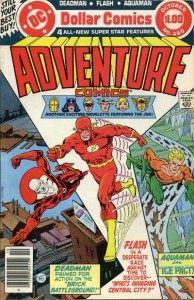 During the late 1970s, DC redesigned Adventure Comics as a Golden Age-style anthology series, where each oversized issue would contain four or more different features. It didn’t last very long — after only eight issues, it went back to a standard size and price. The Flash, Deadman, and Justice Society features appeared in every issue, with Wonder Woman and Aquaman appearing in most of them. Edit: I forgot to mention, these features ran through Adventure Comics #459–466.
During the late 1970s, DC redesigned Adventure Comics as a Golden Age-style anthology series, where each oversized issue would contain four or more different features. It didn’t last very long — after only eight issues, it went back to a standard size and price. The Flash, Deadman, and Justice Society features appeared in every issue, with Wonder Woman and Aquaman appearing in most of them. Edit: I forgot to mention, these features ran through Adventure Comics #459–466.
While the Flash stories in Adventure Comics were written by the regular writer on the book, Cary Bates, they took a drastically different approach. The main series was structured around long, multi-part stories featuring the Flash and Barry Allen’s supporting cast. The Adventure stories were quick one-offs. In fact, only two of the eight stories featured regular Flash villains! Instead they featured strange monsters or bizarre situations. It was sort of a deliberate throwback to the Silver Age during the Bronze Age.
The Adventure Comics run also spanned a period of transition for the Flash: The death of Iris Allen. She appears in three of the early stories (but doesn’t go with Barry to his high school reunion), isn’t mentioned in several, and by the end, Barry is grieving for her.
The Stories
#459: The Crimson Comets of Fallville High – Barry Allen attends his 15th high school reunion and a former classmate picks up his identity through ESP.
 #460: A Nightmare To Remember! – After visiting Earth-2, Barry Allen finds himself in a bizarre reversed version of Keystone City, where the Shade has been elected mayor and Joan Garrick has divorced Jay and remarried the Fiddler.
#460: A Nightmare To Remember! – After visiting Earth-2, Barry Allen finds himself in a bizarre reversed version of Keystone City, where the Shade has been elected mayor and Joan Garrick has divorced Jay and remarried the Fiddler.
#461: The Multiple Murders of Mapleville – Barry and Iris are traveling, and stop in a small town for gas. Barry gets framed for murder. There’s a major plot hole in this one, where a gun is set up as compelling him to fire it, but the compulsion is never mentioned again.
#462: The She-Demon of the Astral Plane – Iris meets an old flame who is studying astral projection, and has to try it out…but an extra-dimensional creature wants to follow her back and take over her body.
 #463: Urtumi the Image-Eater – The Flash encounters an alien monster who formed the basis of local Native American legends. This one was weird enough I had to write it up.
#463: Urtumi the Image-Eater – The Flash encounters an alien monster who formed the basis of local Native American legends. This one was weird enough I had to write it up.
 #464: The Day Up Was Down – Abra Kadabra turns Central City upside-down — literally — looking for an applause machine.
#464: The Day Up Was Down – Abra Kadabra turns Central City upside-down — literally — looking for an applause machine.
#465: Who Is Invading Central City? – A sonic boom causes the Flash to pick up telepathic transmissions from creatures who can’t figure out what the invading humans want.
 #466: The Cloud With the Lethal Lining! – The Weather Wizard turns over a new leaf and tries to use his powers to help people. It doesn’t last. And I really shouldn’t be bothered by the Flash running up a lightning bolt in a story where sunspots cause the Weather Wizard to turn good, but there are limits, you know?
#466: The Cloud With the Lethal Lining! – The Weather Wizard turns over a new leaf and tries to use his powers to help people. It doesn’t last. And I really shouldn’t be bothered by the Flash running up a lightning bolt in a story where sunspots cause the Weather Wizard to turn good, but there are limits, you know?
Update: I’ve added the issue numbers to the list of stories.
 On the 1990 Flash TV series, Hyser played the recurring character Megan Lockhart, a private detective who figured out Barry Allen’s identity. She returned to Central City twice in later episodes, pursuing the fugitive James Jesse, only to find herself the object of his obsession when he became the Trickster.
On the 1990 Flash TV series, Hyser played the recurring character Megan Lockhart, a private detective who figured out Barry Allen’s identity. She returned to Central City twice in later episodes, pursuing the fugitive James Jesse, only to find herself the object of his obsession when he became the Trickster.
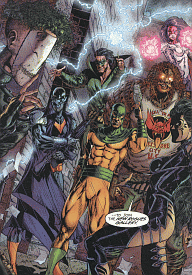
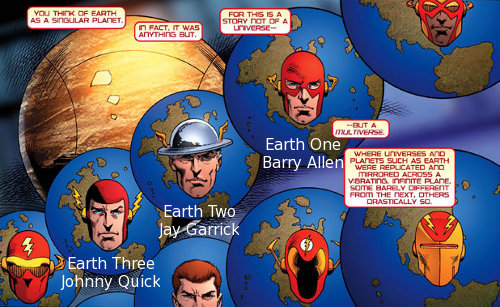
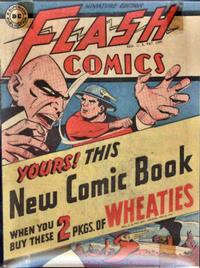
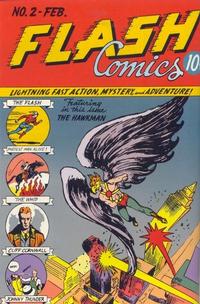
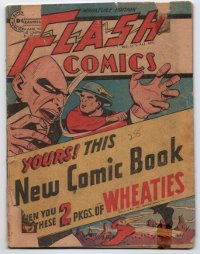
 During the late 1970s, DC redesigned Adventure Comics as a Golden Age-style anthology series, where each oversized issue would contain four or more different features. It didn’t last very long — after only eight issues, it went back to a standard size and price. The Flash, Deadman, and Justice Society features appeared in every issue, with Wonder Woman and Aquaman appearing in most of them. Edit: I forgot to mention, these features ran through Adventure Comics #459–466.
During the late 1970s, DC redesigned Adventure Comics as a Golden Age-style anthology series, where each oversized issue would contain four or more different features. It didn’t last very long — after only eight issues, it went back to a standard size and price. The Flash, Deadman, and Justice Society features appeared in every issue, with Wonder Woman and Aquaman appearing in most of them. Edit: I forgot to mention, these features ran through Adventure Comics #459–466.


